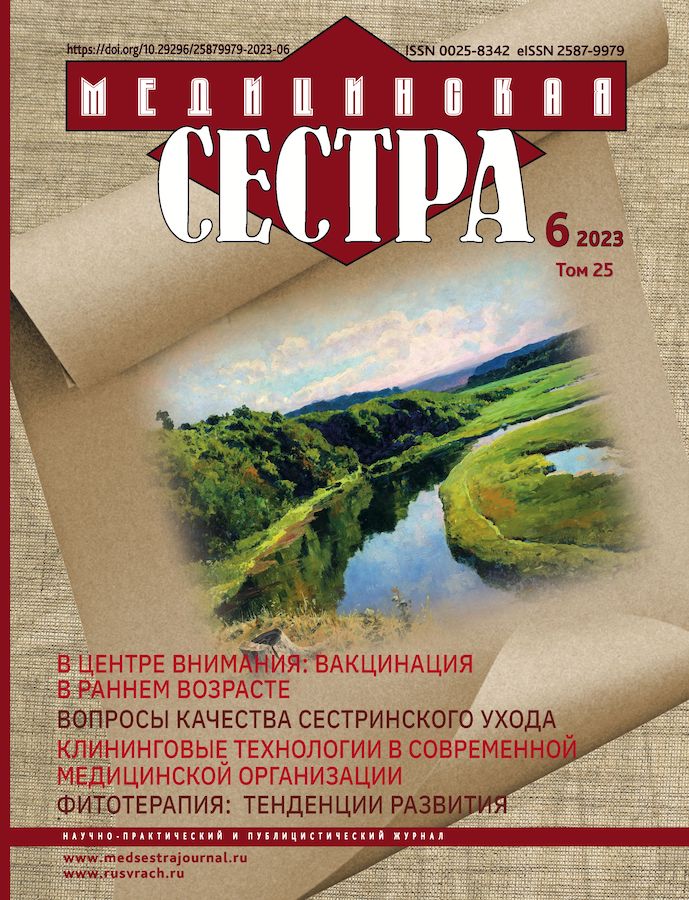Фитотерапия в стоматологии: современные подходы и перспективы
- Авторы: Брудян Г.С.1, Михайлов В.Д.2
-
Учреждения:
- Государственное автономное учреждение здравоохранения Московской области «Воскресенская стоматологическая поликлиника»
- ГБУЗ «Ленинградская областная больница»
- Выпуск: Том 25, № 6 (2023)
- Страницы: 52-56
- Раздел: Обзор
- URL: https://journals.eco-vector.com/0025-8342/article/view/601808
- DOI: https://doi.org/10.29296/25879979-2023-06-10
- ID: 601808
Цитировать
Полный текст
Аннотация
В статье представлен обзор современных исследований и подходов к использованию фитотерапии в стоматологии. Рассмотрены основные группы растительных препаратов, применяемых для профилактики и лечения стоматологических заболеваний, таких как противовоспалительные, антимикробные, регенерирующие и обезболивающие средства. Проанализированы результаты клинических испытаний эффективности фитопрепаратов при лечении кариеса, пульпита, пародонтита, стоматита и других патологий. Особое внимание уделено преимуществам фитотерапии, таким как низкая токсичность, минимум побочных эффектов, хорошая переносимость. Рассмотрены перспективы дальнейших исследований в области разработки и внедрения новых лекарственных средств растительного происхождения для нужд стоматологии. Сделан вывод о большом потенциале фитотерапии и целесообразности ее комплексного применения в практической стоматологии.
Полный текст
Об авторах
Гор Сашаевич Брудян
Государственное автономное учреждение здравоохранения Московской области «Воскресенская стоматологическая поликлиника»
Автор, ответственный за переписку.
Email: dr-brudyan@mail.ru
ORCID iD: 0009-0009-9434-8537
хирург
Россия, ВоскресенскВладислав Дмитриевич Михайлов
ГБУЗ «Ленинградская областная больница»
Email: dr.michailov@gmail.com
ORCID iD: 0009-0004-9265-2985
врач челюстно-лицевой хирург, врач-стоматолог
Россия, Санкт-ПетерьургСписок литературы
- Groppo F.C., Bergamaschi Cde. C., Cogo K. et al. Use of phytotherapy in dentistry. Phytother Res. 2008; 22 (8): 993–998. doi: 10.1002/ptr.2471. PMID: 18570269. [Электронный ресурс]. URL: https://pubmed.ncbi.nlm.nih.gov/18570269/. (дата обращения: 20.08.2023).
- Moghadam, Ehsan Tafazoli et al. Current herbal medicine as an alternative treatment in dentistry: In vitro, in vivo and clinical studies. European journal of pharmacology (2020): 173665. [Электронный ресурс]. URL: https://www.sciencedirect.com/science/article/abs/pii/S0014299920307573 (дата обращения: 20.08.2023).
- Babar A., Naser A., Saiba S., Aftab A., Shah A.K., Firoz A., Essential oils used in aromatherapy: A systemic review, Asian Pacific Journal of Tropical Biomedicine. 2015; 5 (8): 601–611, ISSN 2221-1691, https://doi.org/10.1016/j.apjtb.2015.05.007. [Электронный ресурс]. URL: https://www.sciencedirect.com/science/article/pii/S2221169115001033 (дата обращения: 20.08.2023).
- Гончарова Е.И., Препараты лекарственных растений в лечении заболеваний слизистой оболочки рта. Российский стоматологический журнал. 2015. №4. [Электронный ресурс]. URL: https://cyberleninka.ru/article/n/preparaty-lekarstvennyh-rasteniy-v-lechenii-zabolevaniy-slizistoy-obolochki-rta (дата обращения: 20.08.2023).
- Профилактика стоматологических заболеваний: учебное пособие / С.И. Бородовицина, Н.А. Савельева, Е.С. Таболина; ФГБОУ ВО РязГМУ Минздрава России. — Рязань: ОТСиОП, 2019. — 264 с. [Электронный ресурс]. URL: https://rzgmu.ru/images/files/4/9761.pdf (дата обращения: 20.08.2023).
- Faria R.L., Cardoso L.M., Akisue G. et al. Antimicrobial activity of Calendula officinalis, Camellia sinensis and chlorhexidine against the adherence of microorganisms to sutures after extraction of unerupted third molars. J Appl Oral. 2011; 19 (5):476–482. doi: 10.1590/s1678-77572011000500007. PMID: 21986652; PMCID: PMC3984193. [Электронный ресурс]. URL: https://www.ncbi.nlm.nih.gov/pmc/articles/PMC3984193/ (дата обращения: 20.08.2023).
- Nicolaus C., Junghanns S., Hartmann A. et al. In vitro studies to evaluate the wound healing properties of Calendula officinalis extracts. J Ethnopharmacol. 2017; 196 (20): 94–103. doi: 10.1016/j.jep.2016.12.006. Epub 2016 Dec 10. PMID: 27956358. [Электронный ресурс]. URL: https://pubmed.ncbi.nlm.nih.gov/27956358/ (дата обращения: 20.08.2023).
- Pereira R.F., Bártolo P.J. Traditional Therapies for Skin Wound Healing. Adv Wound Care (New Rochelle). 2016; 5 (5): 208–229. doi: 10.1089/wound.2013.0506. PMID: 27134765; PMCID: PMC4827280. https://www.ncbi.nlm.nih.gov/pmc/articles/PMC4827280/ (дата обращения: 20.08.2023).
- Hamidpour M., Hamidpour R., Hamidpour S. et al. Chemistry, Pharmacology, and Medicinal Property of Sage (Salvia) to Prevent and Cure Illnesses such as Obesity, Diabetes, Depression, Dementia, Lupus, Autism, Heart Disease, and Cancer. J Tradit Complement Med. 2014; 4 (2): 82–88. doi: 10.4103/2225-4110.130373. PMID: 24860730; PMCID: PMC4003706. [Электронный ресурс]. URL: https://www.ncbi.nlm.nih.gov/pmc/articles/PMC4003706/ (дата обращения: 20.08.2023).
- Harris G., Shen Y., Ha H. et al. Dissecting the signaling mechanisms underlying recognition and preference of food odors. J Neurosci. 2014; 34 (28): 9389–9403. doi: 10.1523/JNEUROSCI.0012-14.2014. PMID: 25009271; PMCID: PMC4087214. [Электронный ресурс]. URL: https://www.ncbi.nlm.nih.gov/pmc/articles/PMC4087214/ (дата обращения: 20.08.2023).
- Пухов А. А. Эфирные масла с антимикробными и противовирусными свойствами для медицинской практики. Журнал «Лечащий врач». [Электронный ресурс]. URL: https://www.lvrach.ru/2036/partners/15437708 (дата обращения: 20.08.2023).
- Rostoka D., Kroica Yu., Iriste V. et al. Лечение галитоза средствами, содержащими эфирные масла. Стоматология. 2012; 91 (3): 27–34. [Электронный ресурс]. URL: https://www.mediasphera.ru/issues/stomatologiya/2012/3/030039-1735201238 (дата обращения: 20.08.2023).
- Елисеева Т., Ткачева Т., Чабрец (лат. Thýmus). Журнал здорового питания и диетологии. 2017. 2 [Электронный ресурс]. URL https://cyberleninka.ru/article/n/chabrets-lat-th-mus (дата обращения: 20.08.2023).
Дополнительные файлы






